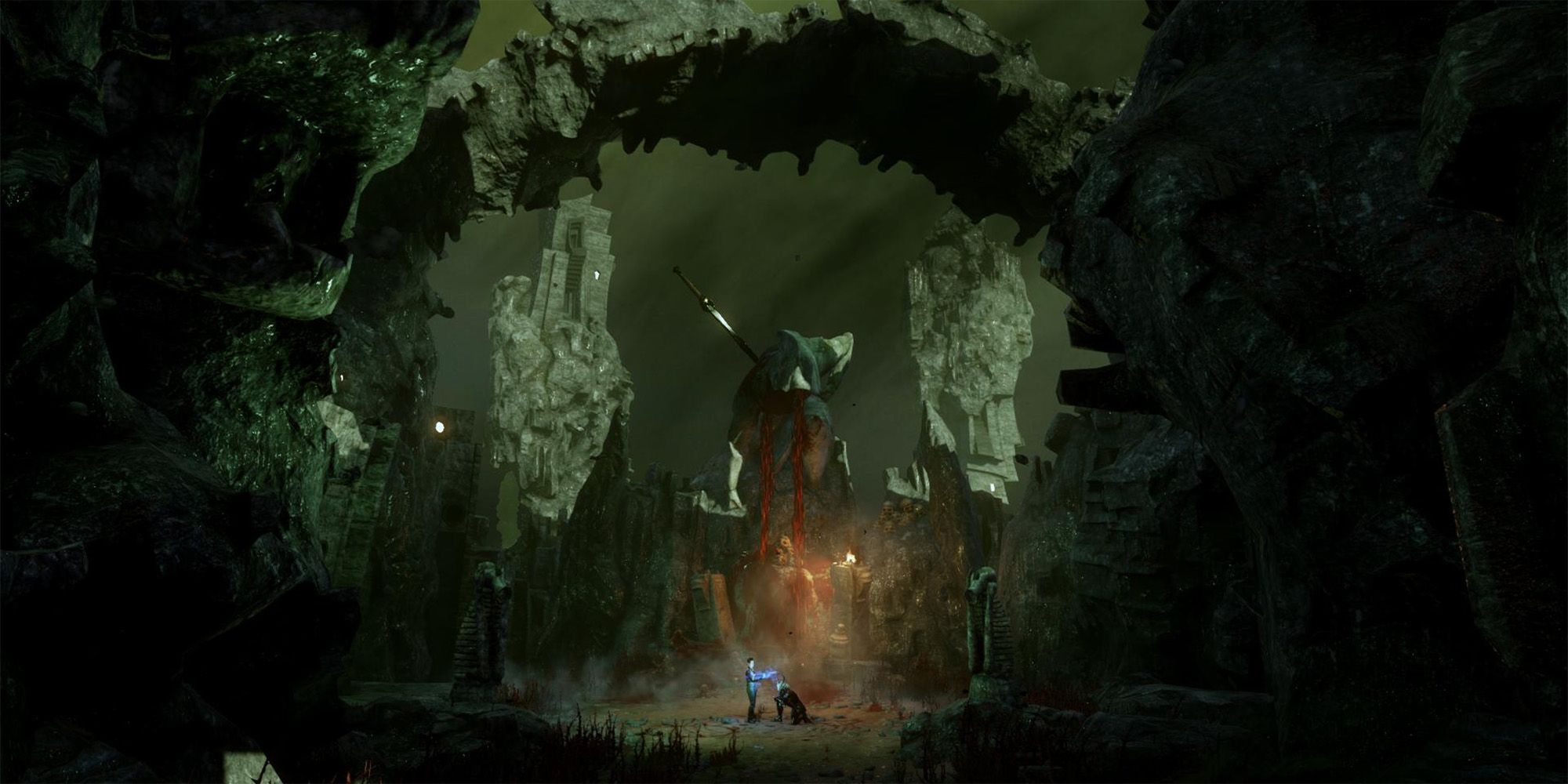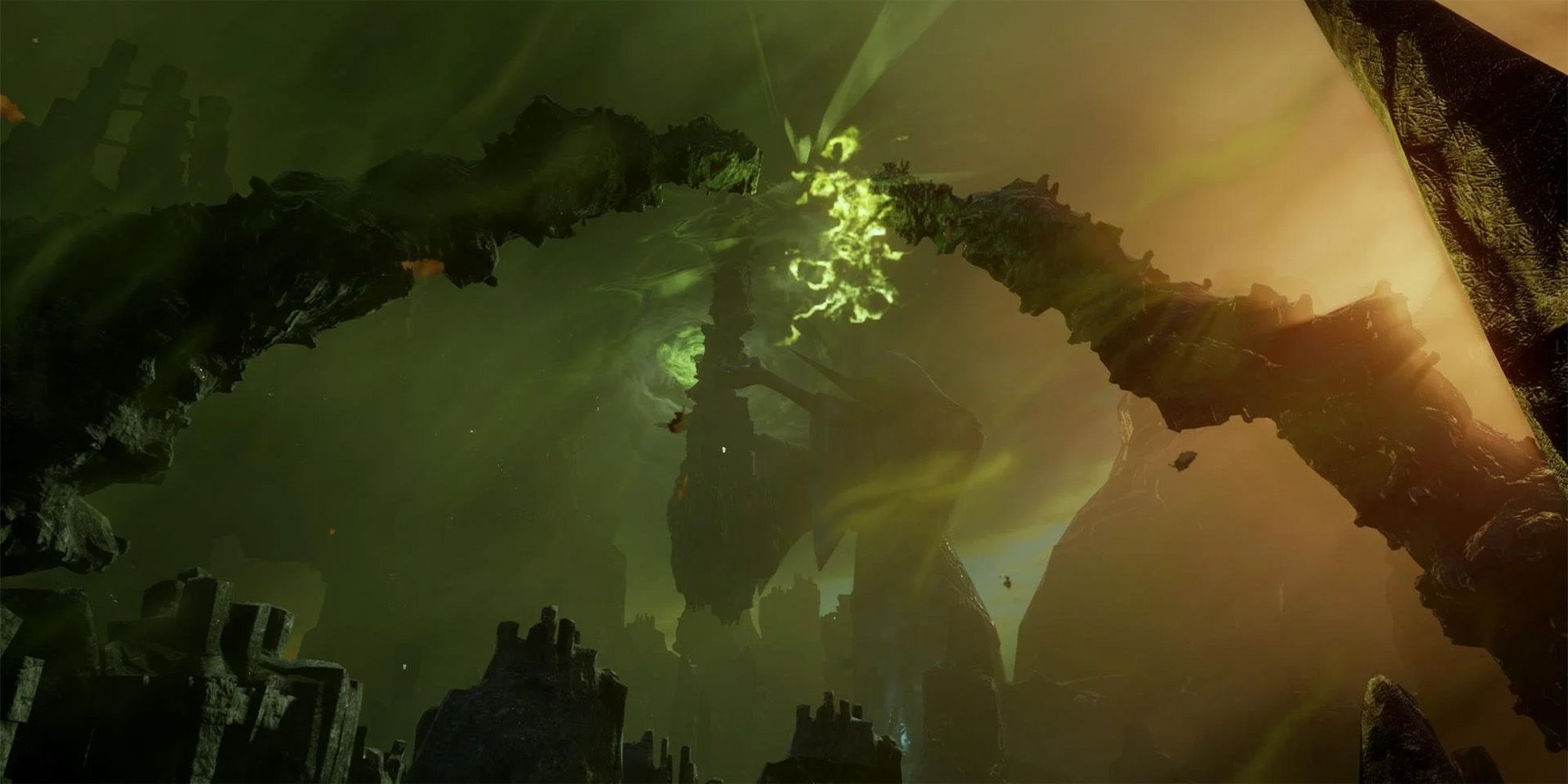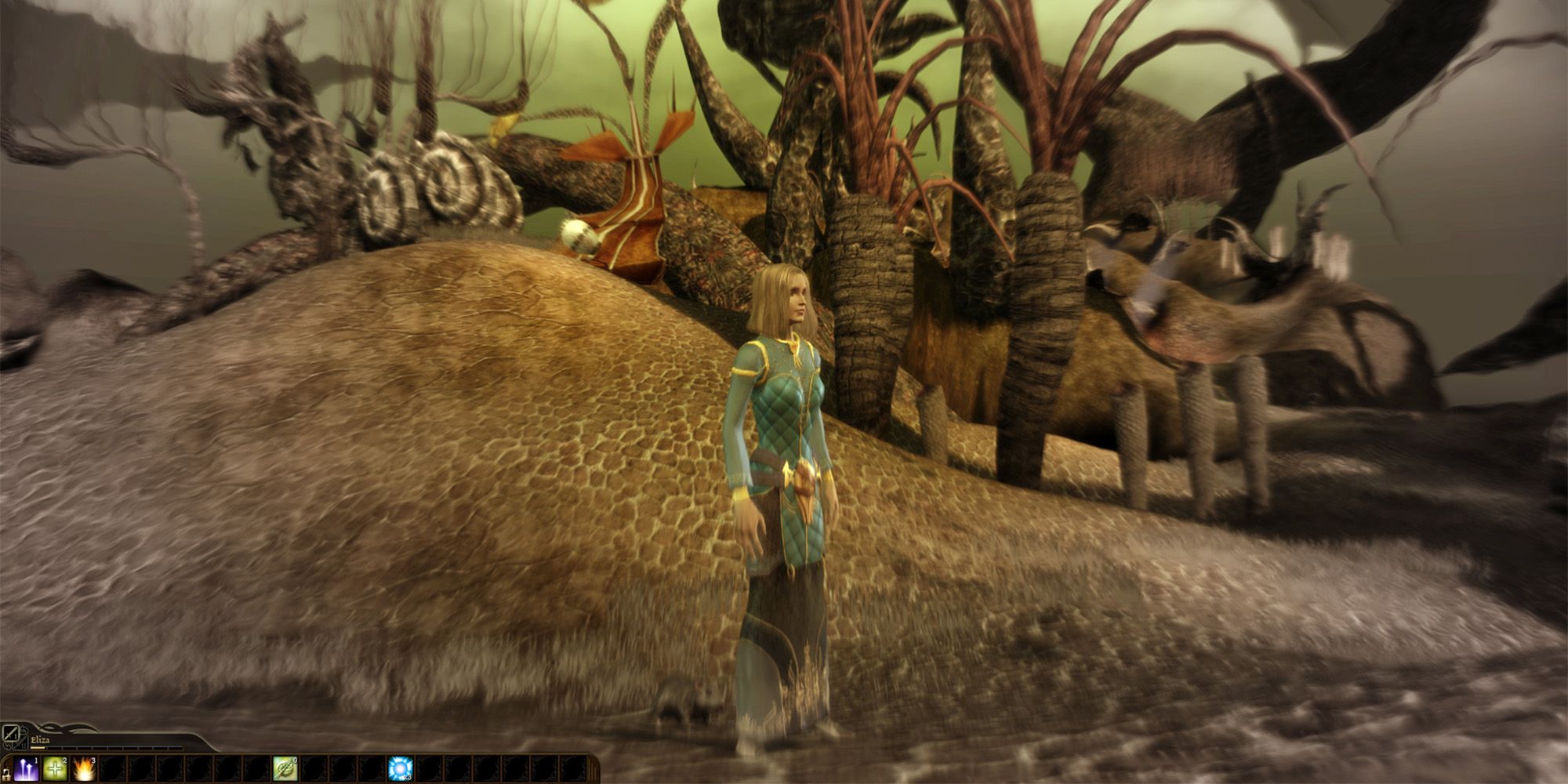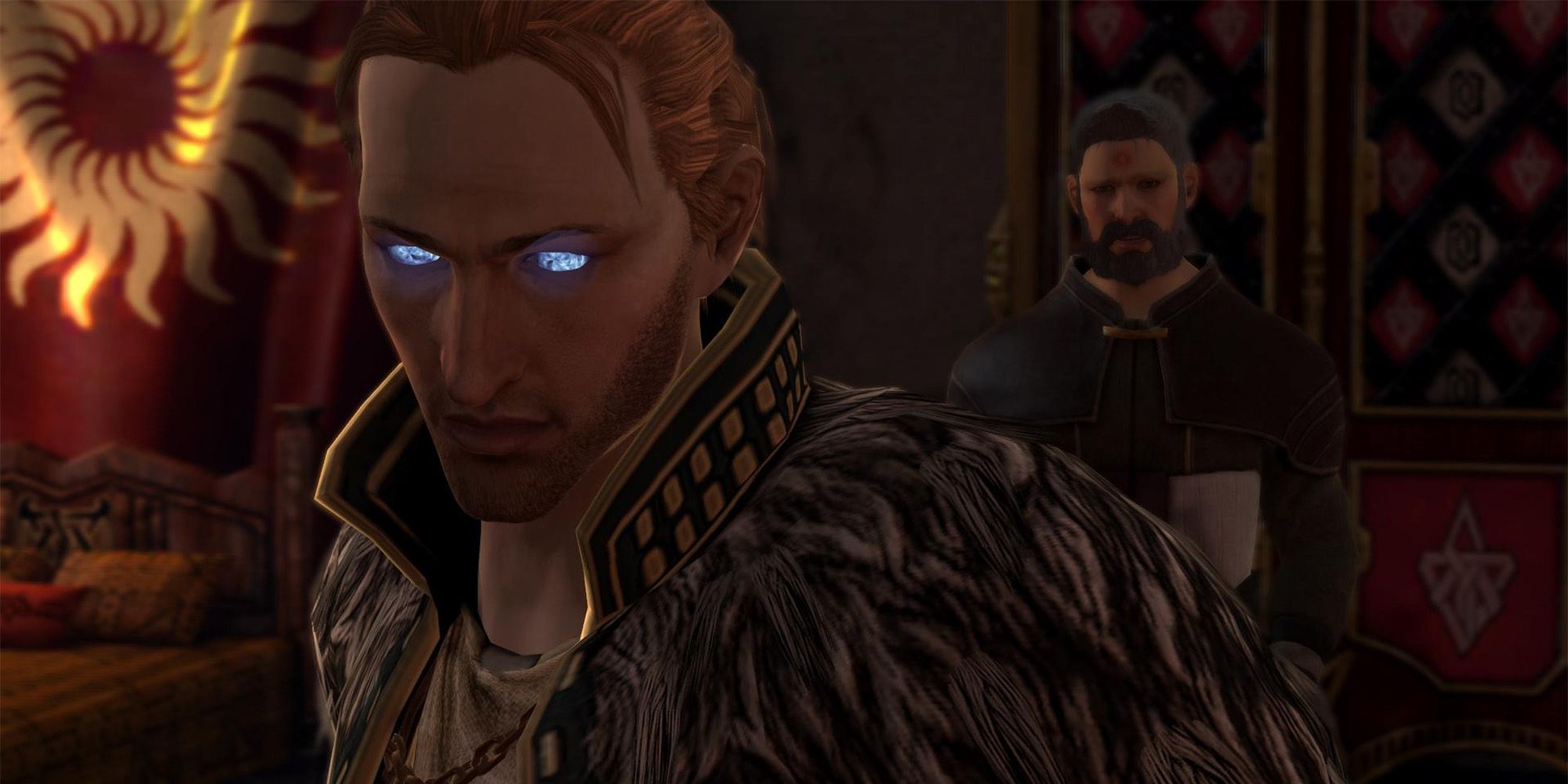In the Dragon Age universe, there are plenty of strange and unnerving places to explore, but most fans agree there is none more disturbing than the Fade. An eerie, metaphysical realm where time and place have very little meaning, exploring -- or rather stumbling through -- the Fade in some capacity has been a staple in every game in the BioWare series.
But what is the Fade, and where did it come from? The answer to that question varies from one Thedosian culture to the next, but there is one thing nearly all cultures agree on: The Fade is a mysterious and disturbing place filled with darkness, spirits and demons.
Chantry philosophy states that the Fade was the first world created by the Maker, which he populated with the Spirits, who were created in his likeness. Though they were fascinating at first, the Maker soon grew bored with his creations and began creating Thedas. He populated Thedas with humankind, who had imagination, ingenuity and the ability to think for themselves. To keep the worlds separated, the Maker crafted a veil between them.
The Chantry also believes that the seat of the Maker, once called the Golden City, sat directly in the center of the Fade. When ambitious Tevinter Magisters, tempted by malicious spirits of the Fade, breached the Golden City, their sin corrupted its purity, turning it black and creating the first Blight and Darkspawn.
Dalish elves believe the Fade was once home to their pantheon of gods, and in the time before the fall of Arlathan, there was no veil separating the Fade from Thedas. Originally, the elves simply called the Fade "the sky." When the veil was crafted, they believed its purpose was to hold back the sky -- and their gods -- from them. After the deception and treachery of Fen'harel (also known as The Dread Wolf), the elven gods were locked away at the heart of the Fade in what is known as the Eternal City. Here, they remain imprisoned.
Though there are differences between these belief systems, there are also similarities. Ancient Tevinters offered a strange thread that tied them even more closely together. According to them, the Fade was the home of the "Old Gods," and the city at the center was the seat of their power. In all in-game explorations of the Fade, the city at the core can always be seen, proving that there was once a city. But who dwelled there, and where did they go?
Exploration of the Fade provides few answers to such grand questions. Players can wander the Fade for hours, climbing through the jagged, craggy wastes while trying to make sense of what is up or down and never find themselves any closer to that mysterious city hovering overhead. Perhaps that's because, to explore the Fade, one generally needs to be dreaming, and such dreams are rarely remembered.
Dreaming is not the only way to enter the Fade, however. Mages cross into the Fade as they work their magic, allowing them to remain conscious as they travel its mysterious pathways. Using a mineral-like substance known as Lyrium allows mages to tap even more deeply into the Fade, exploring at will. Mages can also draw beings generally unable to enter, such as dwarves (who do not dream) into the Fade.
Because of its nature, the things that exist within the Fade are usually imagined by dreamers or shaped by the spirits who dwell there, which aligns with the Chantry rhetoric about the Maker and his first children. The spirits of the Fade were great mimics, able to create that which they saw, but never quite as it truly was. That could explain why everything in the Fade is so bizarre and seemingly senseless. With no concept of reality or existence beyond what is seen, the simplistic display of their vision becomes distorted and difficult to understand by mortal minds.
As dreamers shape the Fade during their somnambulistic wanderings, it takes on the expectation and visions in the mind. Because of this, it is not uncommon for dreamers to encounter lost loved ones while wandering that strange land, as the spirits recognize their longing and attempt to offer the dreamer a chance to experience that connection once more. The Chantry perceives interactions with the spirits of the Fade as dark temptations, referring to these spirits as demons and refusing to believe they are anything other than evil.
According to the Fade spirit Justice, when a living being dies, their soul leaves the body and enters the Fade. What becomes of those souls after is uncertain. According to the Chantry, they pass through the Fade and arrive at the Maker's side if they remained loyal in their worship, while those who did not are left to wander aimlessly through the quagmire and confusion. The Dalish, on the other hand, believe that, in the time of Arlathan, their people did not die. Instead, they entered the Fade and wandered its depths, sometimes returning to the People with knowledge and wisdom gathered there.
Regardless of its true nature, the Fade has been an essential part of every Dragon Age game, with the player character thrust into its depths and forced to work their way through. Dragon Age: Inquisition's events saw tears in the veil spill copious amounts of demons and spirits into Thedas, and it is almost certain many of those that were not destroyed or sent back to the Fade still walk the world. Dragon Age 4 will likely take players beyond the veil and into the Fade once again, perhaps even drawing them closer to the once Golden City at its center.




